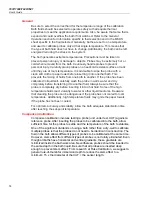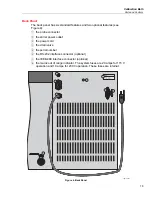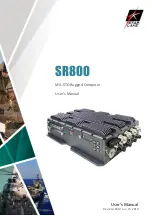
Calibration Bath
General Operation
25
Silicone Oil
Silicone oils are available which offer a much wider operating temperature range
than mineral oil. Like most oils, silicone oils have temperature control
characteristics which are somewhat poorer than water. The viscosity changes
significantly with temperature and thermal expansion also occurs. These oils
have very high electrical resistivity. Silicon oils are fairly safe. These oils are
relatively expensive.
Fluid Characteristics Charts
Table 2 and Figure 6 have been created to provide help in selecting a heat
exchange fluid media for your constant temperature bath. The charts provide
both a visual and numerical representation of most of the physical qualities
important in making a selection. The list is not all inclusive, many usable fluids
may not have been shown in this listing.
Limitations and Disclaimer
Every effort has gone into making these charts accurate, however, the data here
does not imply any guarantee of fitness of use for a particular application.
Working near the limits of a property such as the flash point or viscosity limit can
compromise safety or serviceability. Sources of information sometimes vary for
particular properties. Your company’s safety policies as well as personal
judgment regarding flash points, toxicity, etc. must also be considered. You are
responsible for reading the Material Safety Data Sheets and making a judgment
here. Cost may require some compromises as well. Fluke Calibration cannot be
liable for the suitability of application or for any personal injury, damage to
equipment, product or facilities in using these fluids.
The charts include information on a variety of fluids which are often used as heat
transfer fluid in baths. Because of the temperature range some fluids may not be
useful with your bath.
About the Graph
The fluid graph visually illustrates some of the important qualities of the fluids
shown.
Temperature Range:
The temperature scale is shown in degrees Celsius. A
sense of the fluid’s general range of application is indicated. Qualities including
pour point, freeze point, important viscosity points, flash point, boiling point and
others may be shown.
















































